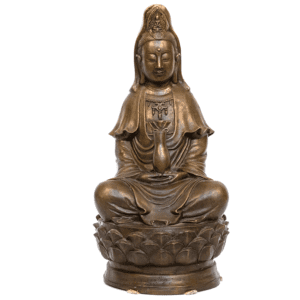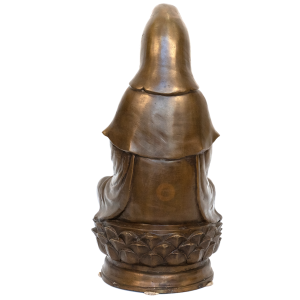Vintage Bronze Guanyin in Meditation, Thailand #11250BKE
Original price was: $485.00.$350.00Current price is: $350.00.H: 19.5” W: 9.375” D: 9” | CALL 213-568-3030 or email [email protected] FOR SHIPPING
This lovely vintage 20th century Thai bronze statue is the White Clad Guanyin seated in meditation on a multi-tiered throne holding her vial of precious dew. Her open hood is centered by a mandorla surrounding an image of Buddha Amitabha, the Buddha of Infinite Light. This one of a kind piece is a vision of compassionate serenity with her half closed eyes and benevolent smile.


